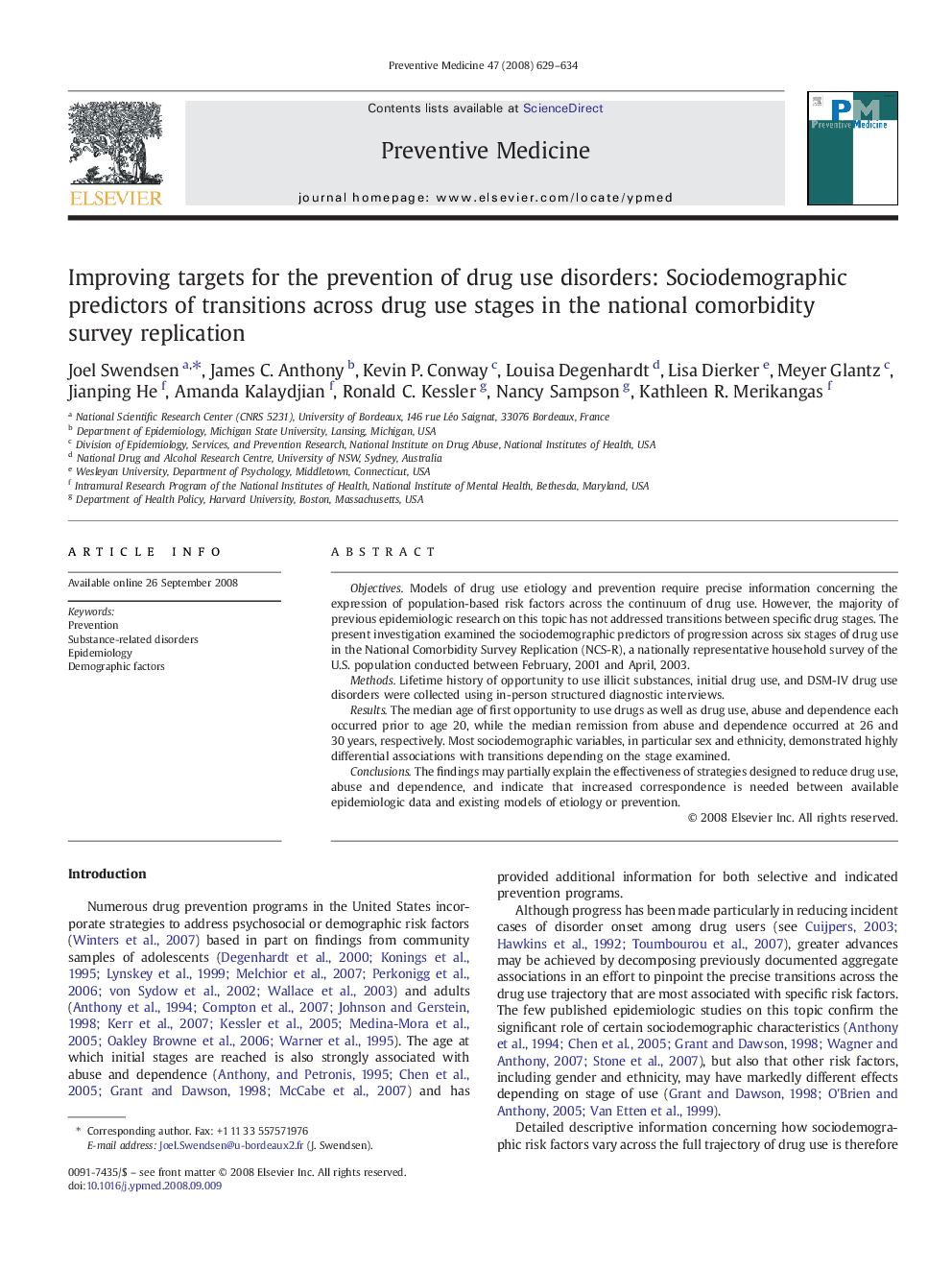| Article ID | Journal | Published Year | Pages | File Type |
|---|---|---|---|---|
| 3101323 | Preventive Medicine | 2008 | 6 Pages |
ObjectivesModels of drug use etiology and prevention require precise information concerning the expression of population-based risk factors across the continuum of drug use. However, the majority of previous epidemiologic research on this topic has not addressed transitions between specific drug stages. The present investigation examined the sociodemographic predictors of progression across six stages of drug use in the National Comorbidity Survey Replication (NCS-R), a nationally representative household survey of the U.S. population conducted between February, 2001 and April, 2003.MethodsLifetime history of opportunity to use illicit substances, initial drug use, and DSM-IV drug use disorders were collected using in-person structured diagnostic interviews.ResultsThe median age of first opportunity to use drugs as well as drug use, abuse and dependence each occurred prior to age 20, while the median remission from abuse and dependence occurred at 26 and 30 years, respectively. Most sociodemographic variables, in particular sex and ethnicity, demonstrated highly differential associations with transitions depending on the stage examined.ConclusionsThe findings may partially explain the effectiveness of strategies designed to reduce drug use, abuse and dependence, and indicate that increased correspondence is needed between available epidemiologic data and existing models of etiology or prevention.
